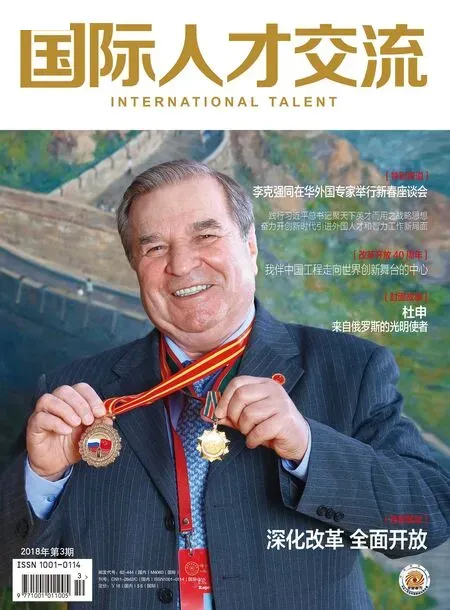The China Solution for A New Era
By Laurence Brahm
Founding Director, Himalayan Consensus Institute
A light rain touched the marble steps of the Great Hall of the People as delegates arrived on the morning of October 18, 2017 to attend the opening session of the 19th National Congress of the Communist Party of China.
To the surprise of many, the Congress opened with a minute of silence during which all delegates stood with heads bowed, in memory of the fi rst generation of leaders who established the Peoples Republic of China 68 years ago. By adding this moment of silence at the opening of the Congress, China’s current leadership is honoring its historic past. At the same time, it is distinguishing clearly the present new era, from the preceding era.
President Xi Jinping is starting with a clean slate. In delivering his opening speech, he lost no time in setting a new course by adopting in his opening statement the term “socialism with Chinese characteristics for a new era.” The key words are: “new era.”
As head of the largest communist party in the world, Xi’s challenge is to re-engineer the CPC to make it an effective and innovative leadership. Xi spoke for three and a half hours in delivering a detailed blueprint - effectively a business plan - to re-engineer the mindset and functions of the CPC to lead China into a high tech and environmentally sensitive future.
That is where the term “new era” comes in.
Xi openly talked about past problems of corruption and abuse of power. “We must have the determination to get rid of all outdated thinking and ideas and all institutional ailments, and to break through the blockades of vested interests.” Thereby challenging conservative, entrenched ideas that are not consistent with the current era we live in.
In his speech he added “innovate” as the first ability topping the list of traditional CPC terms such as “unity,” “solidarity,”“vigilance” and “vitality” that are held up as standards needed to lead. However, in the “new era” where China is leading the world in technology, AI, renewable energy and green finance, it just makes sense that innovation becomes the leading standard for the CPC.
Of course, of the CPC’s over 80 million party members thirtyfi ve percent are under the age of forty. That makes the CPC the youngest it has been since Mao Zedong was leading a youthful Red Army nearly a century ago.
While Xi opened the 19th CCP Congress by honoring the revolutionary leaders who founded the People’s Republic ninety-six years ago, it is notable that he ended his speech by acknowledging the importance of China’s youth stating, “A nation will prosper only when its young people thrive; a country will be full of hope and have a great tomorrow only when its younger generations have ideals, ability and strong sense of responsibility.”
At the 19th Congress of the CPC, President Xi Jinping. He suggested how the China Solution could offer a pathway, or at least an example, for other nations seeking their own pathways toward development. Moreover, he emphasized that the China Solution is by no means a singular model other nations should necessarily follow as the models previously pushed by certain institutions in the west. But the China Solution, emphasis was on “ecological civilization” meaning that such infrastructure development should avoid the stage of polluting industry that China had experienced and is now rectifying. It looked toward solutions that involve ecological cities that are smart, green and blue.
Rather Xi has suggested that the China Solution is about sharing China’s own experiences in overcoming underdevelopment, closing gaps between rural and urban sectors, correcting social imbalances and environmental damage by combining planning with market. It is not about political ideology but pragmatism. It is all about eliminating poverty, fostering development and the security that comes with prosperity. These are points welcomed by the global south seeking pragmatic approaches to development.
The China Solution is not a model in itself, but rather about applying experiences. Solutions are based on local culture and local conditions. Everywhere in the world is different. However,China can share some of its experiences. The transformation of China from the 1980s-to present has involved massivefixed asset investment in infrastructure. Many of China’s provinces are land locked. Without roads, rails, and communication networks,and ports in the coastal regions, there would not have been the decades surge in foreign investment and exports. As much of the developing world faces similar challenges - land-locked states across Africa, Central Asia, and South Asia - the experience of China is relevant.
In many respects by coining the China Solution, Xi has set a tone for diversified localization rather than monolithic globalization. He has emphasized the need for respect of diverse systems based on each people’s heritage, rather than the cookie one modelfits all approach that forced upon developing countries by certain western institutions.
Xi’s point is that the China Solution does not mean the solution came from China. It means the solution does not need to come from outside. The solution is with the culture, economy and psychology of each people and nation. That is the China Solution.

